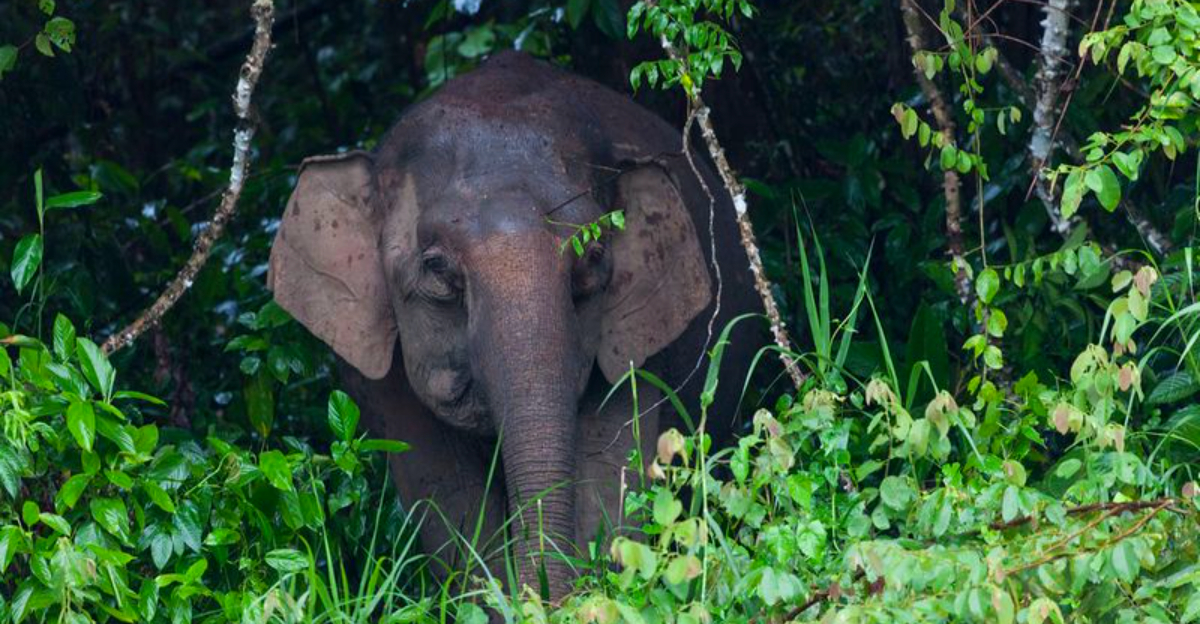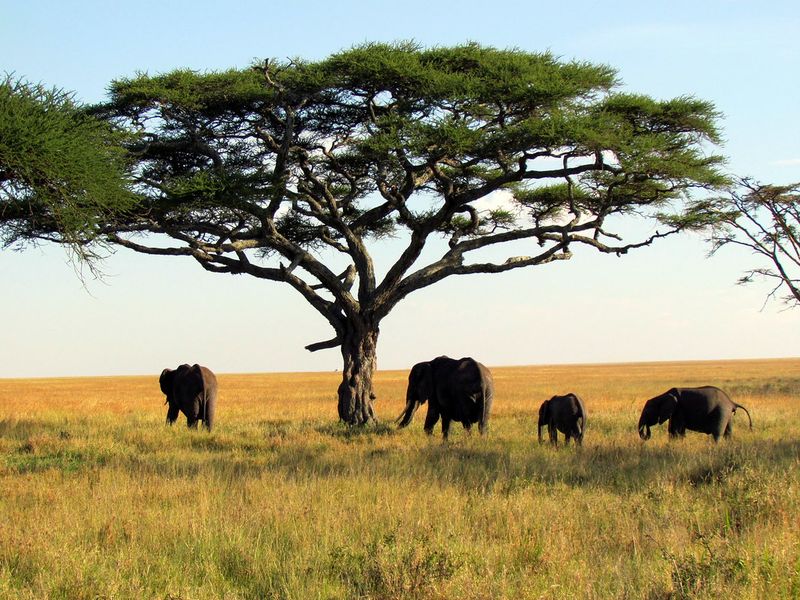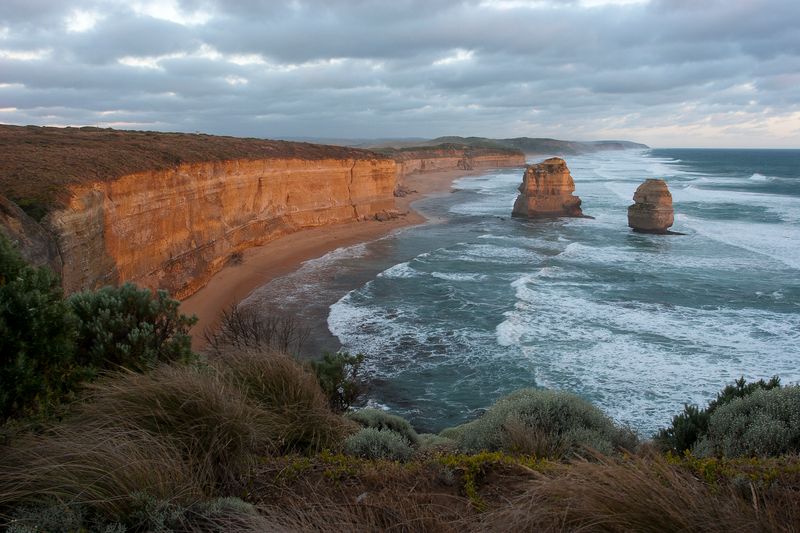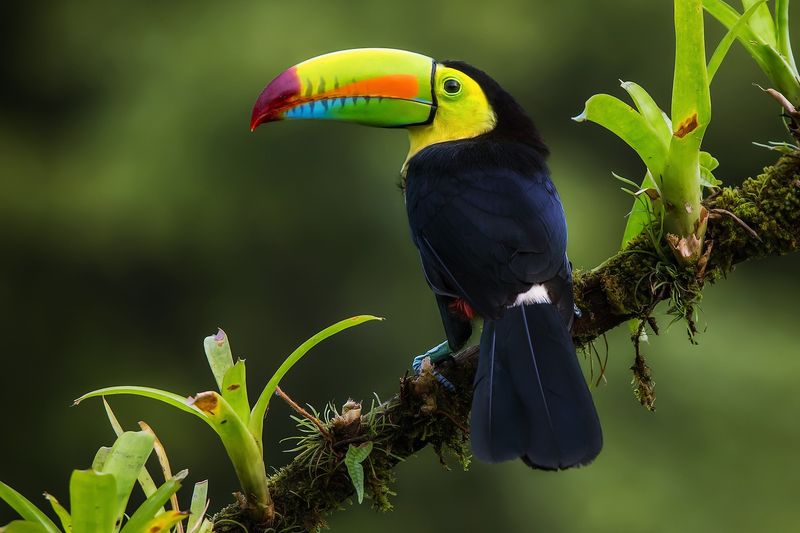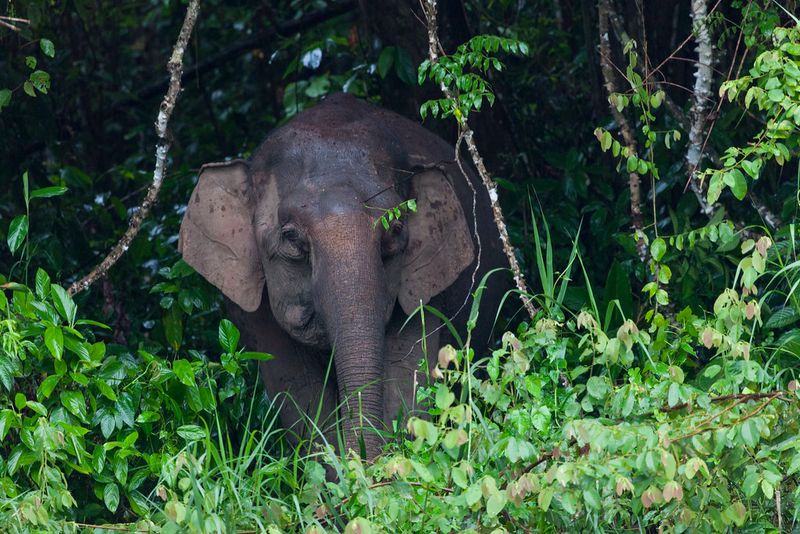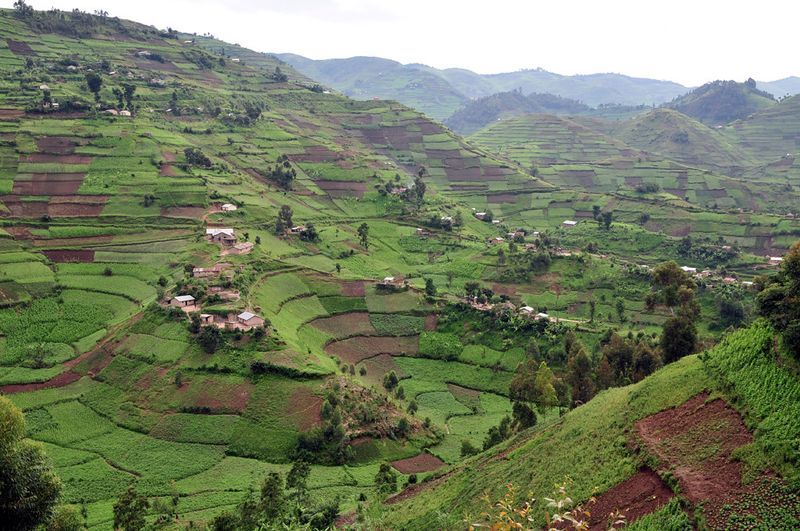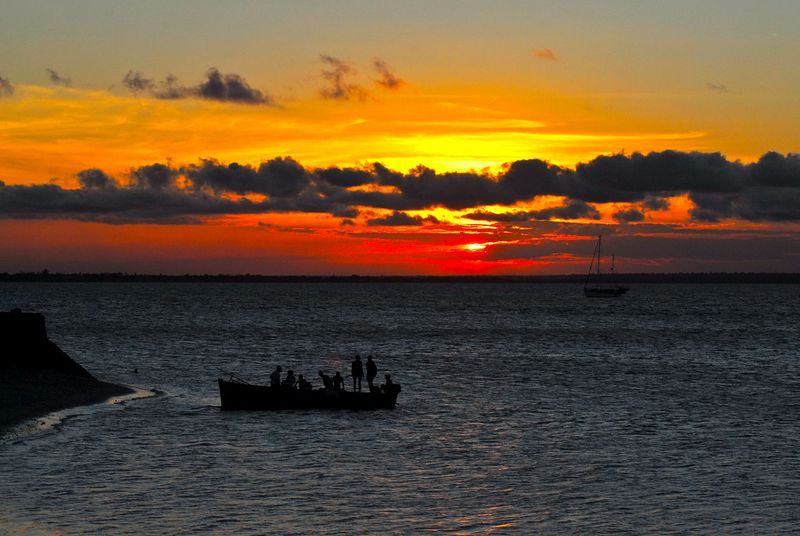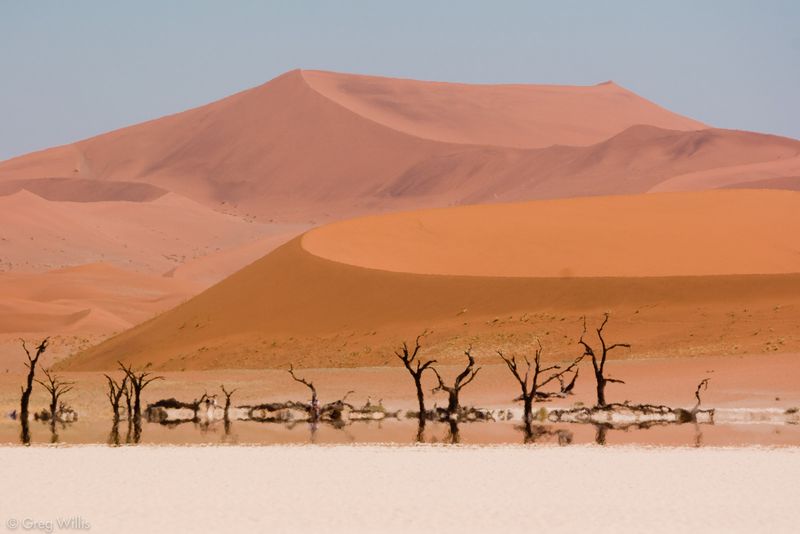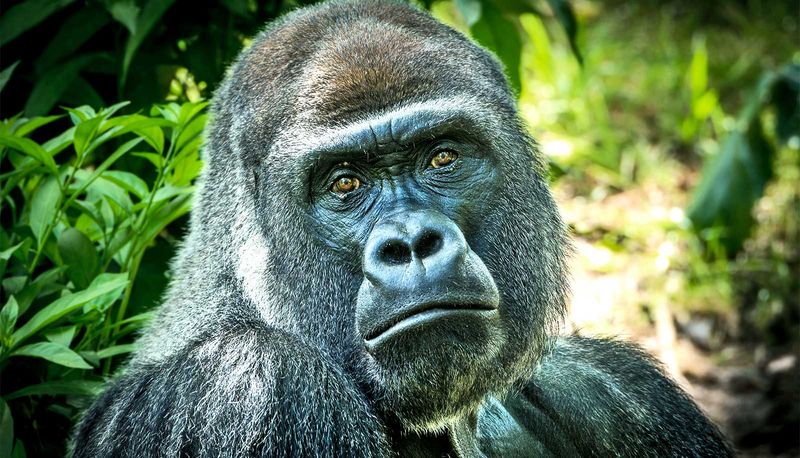Crave encounters that feel truly wild, unscripted, and unforgettable? This guide spotlights 15 countries where nature stages its boldest performances, from ocean giants to rainforest ghosts. Each destination blends remarkable species with landscapes that heighten the drama and intimacy of observation. Read on to plan a journey where every sighting feels like a once-in-a-lifetime moment.
Tanzania
Tanzania delivers wildlife theatre on an epic scale. On the sweeping Serengeti, the Great Migration surges across grasslands and crocodile-lined rivers, with predators shadowing every movement. Venture to Ngorongoro Crater for dense concentrations of lions, elephants, and rare black rhinos framed by volcanic walls. Beyond big game, varied habitats—grasslands, woodlands, wetlands—thrum with birdlife and smaller wonders. A dawn drive feels primal: huge skies, ochre light, and the raw tension of predator and prey. Remote areas like Ruaha and Katavi offer solitude and old-school safari spirit. In the Selous-Nyerere ecosystem, boat safaris reveal hippos, elephant crossings, and hidden river life. If you want nature’s pulse at full volume, Tanzania’s wild heart beats loudest.
Ecuador
Ecuador concentrates an astonishing range of wildlife into a small, travel-friendly package. The Galápagos deliver surreal proximity: marine iguanas basking on lava, blue-footed boobies dancing, and giant tortoises lumbering through misty highlands. On the mainland, the Amazon’s Yasuni and Cuyabeno teem with macaws, monkeys, river dolphins, and secretive cats. Cloud forests of Mindo brim with hummingbirds and orchids, while coastal mangroves shelter endemic species. You can snorkel with sea lions in the morning and listen to rainforest howler choruses by night. Even short trips feel rich and varied. Conservation-minded operators make wildlife encounters thoughtful and educational. For maximal biodiversity with minimal transit, Ecuador is a masterclass in concentrated wonder.
Brazil
Brazil is a continent disguised as a country, and its wildlife stories are equally grand. In the Amazon, dawn mists lift to reveal macaws, pink river dolphins, and the possibility—if luck aligns—of a jaguar padding along a riverbank. The Pantanal offers the Western Hemisphere’s finest big-cat sightings, with boat-based searches yielding unforgettable encounters. Atlantic Forest remnants hide colorful tanagers and golden lion tamarins. Along the coast, humpbacks breach and protected marine reserves sparkle with reef life. The sheer scale of wilderness instills awe and humility, while expert naturalists decode tracks, calls, and canopy whispers. Brazil rewards patience with outsized drama, reminding travelers what true ecological abundance feels like.
Madagascar
Madagascar is evolution’s mad workshop, where isolation birthed creatures found nowhere else. Meet lemurs that sing at sunrise, sifakas that dance sideways, and chameleons that can stare in two directions at once. Spiny forests bristle with alien flora, while rainforests shimmer with leaf-tailed geckos and jewel-bright frogs. Each park—Andasibe, Ranomafana, Isalo—reveals a different cast of endemics. Conservation challenges are real, making responsible travel crucial to sustaining habitats and livelihoods. Night walks unveil a parallel world of eyeshine and whisper-quiet movement. Even seasoned wildlife travelers report a sense of wonder that feels brand new. If you crave uniqueness in the truest sense, Madagascar is the motherlode.
New Zealand
New Zealand’s wildlife story unfolds in splendid isolation. With few native land mammals, birds took center stage, evolving into flightless icons like the kiwi and ingenious alpine parrots such as kea. Offshore, albatrosses ride stormy winds and fur seals bask on craggy shores. Predator-free sanctuaries and offshore islands provide rare glimpses of ecosystems recovering through intensive conservation. The tuatara, a living fossil, hints at deep evolutionary time. From glowworm-lit caves to penguin colonies at dusk, encounters feel intimate and carefully managed. Interpretation is excellent, helping visitors grasp the stakes of invasive species control. Expect quiet, meaningful sightings over megafauna spectacle—and leave with a new respect for fragility.
Botswana
Botswana elevates the safari to an art form through low-impact, high-quality experiences. The Okavango Delta floods create a living tapestry where elephants, red lechwe, and fish eagles thrive among papyrus channels. Mokoro canoe rides bring you eye-level with kingfishers and shy antelope, while game drives track lions across open plains. In Chobe, vast elephant herds gather at the water’s edge; in Moremi, leopards ghost through woodlands. Strict conservation policies keep visitor numbers low and wildlife encounters unhurried. Night drives and walking safaris reveal smaller wonders—genets, owls, and glowing horizons. The result is raw yet refined, with nature leading every scene. Come for serenity and dramatic, unscripted moments.
Australia
Australia is a wildlife parallel universe, brimming with endemics that defy expectations. Kangaroos bounding across red earth feel archetypal, yet a quiet creek might reveal a platypus—part duck, part otter, all mystery. Coastal waters host migrating humpbacks, reef sharks, and technicolor coral gardens on the Great Barrier Reef. In Tasmania, devils snarl and rare quolls prowl; tropical North Queensland hums with birds-of-paradise-like riflebirds and cassowaries. Urban parks even shelter cockatoos and rainbow lorikeets. Conservation-minded tours decode the interplay between fire, drought, and species survival. From desert to rainforest to reef, Australia’s variety keeps curiosity in constant motion. The encounters are unmistakably unique—and distinctly Aussie.
Costa Rica
Costa Rica is compact but bursting with life, making it ideal for immersive, accessible wildlife watching. Cloud forests drip with epiphytes and hummingbirds; lowland jungles echo with howler monkeys and the soft glide of sloths. Night walks reveal glowing fungi and glass frogs, while Caribbean and Pacific coasts shelter nesting turtles and whale migrations. National parks are abundant, well-marked, and supported by knowledgeable guides who transform casual sightings into revelations. Biodiversity stations and lodges foster close yet responsible encounters. The country’s conservation ethos is evident—from biological corridors to reforestation successes. Expect colorful, approachable adventures and a sense that nature is always nearby, singing, chirping, and rustling just beyond the trail.
Malaysia (Borneo)
Borneo’s Malaysian states—Sabah and Sarawak—harbor ancient rainforests where giants still roam. Orangutans swing through cathedral-like canopies, while proboscis monkeys gather along tidal rivers. Night river cruises unveil crocodiles and glinting eyeshine; daylight treks might reveal pygmy elephants’ soft-footed passage. Danum Valley and Deramakot are names whispered by wildlife aficionados for rare cats and pristine habitat. Caves in Mulu release bat vortexes at dusk, a phenomenon of sound and shadow. Conservation sanctuaries balance rescue with rewilding, giving visitors a nuanced look at threats and hope. The experience is humid, earthy, and electric with possibility. Come ready to move slowly, listen hard, and look up often.
South Africa
South Africa delivers the classic safari with extra dimensions. In Kruger and private reserves, the Big Five headline, but the supporting cast—wild dogs, cheetahs, and abundant birds—steals scenes. Along the Cape coast, marine safaris bring whales, sharks, and playful seals within view, while penguins waddle through urban-adjacent beaches. The diversity of ecosystems—from fynbos to forests—means every region offers distinct encounters. Conservation is visible in translocations, community-led initiatives, and innovative lodges. Accessibility is excellent, with self-drive options and expert-guided experiences. Whether tracking lions at dawn or watching dassies on Table Mountain, South Africa keeps the sightings coming and the learning continuous.
India
India’s wildlife unfolds across an astonishing range of habitats, each with a signature species. In central forests, tigers pad through dappled sal, while in Assam’s floodplains Kaziranga’s one-horned rhinos graze like armored tanks. The Himalaya shelters elusive snow leopards and highland ungulates; the Western Ghats brim with endemic birds and amphibians. Safaris hum with cultural texture—temples, villages, and bird calls interweave. Parks like Tadoba, Bandhavgarh, and Ranthambore offer rising tiger sightings, while Kaziranga astonishes with megafauna density. Conservation successes and challenges sit side by side, making guided interpretation invaluable. Expect drama, diversity, and deeply memorable moments that connect wildlife to place and people.
Uganda
Uganda offers some of Africa’s most intimate wildlife encounters. Gorilla trekking in Bwindi or Mgahinga is a humbling, heart-thudding experience, where careful habituation allows an hour of quiet proximity. Nearby, Kibale’s chimps flash through the canopy, their drumming calls echoing across forest galleries. Queen Elizabeth National Park adds tree-climbing lions and prolific birding along the Kazinga Channel. The country’s rolling hills and crater lakes create photogenic transitions between ecosystems. Conservation and community tourism intersect meaningfully, with permits funding protection and local livelihoods. Treks can be challenging but are richly rewarding. Uganda blends primate drama with gentle hospitality, leaving visitors moved and newly mindful of wild kinship.
Canada (Arctic/North)
Northern Canada delivers wildlife in elemental form, where extreme conditions sculpt remarkable lives. Polar bears patrol sea ice near Hudson Bay, while arctic foxes and snowy owls pattern the tundra with motion and silence. In summer, migratory birds flood wetlands; in winter, auroras dance above frozen horizons. Beluga whales gather in river estuaries, chirping through milky waters. Travel is expeditionary—by tundra vehicles, small boats, or fly-in lodges—adding to the sense of remoteness. Encounters feel earned, weather-shaped, and unforgettable. Guides emphasize safety and ethical distance, so wildlife remains undisturbed. Come for stark beauty and the thrill of life persisting at the planet’s edge.
Mozambique
Mozambique excels at oceanic wildlife for travelers willing to venture off the mainstream path. Along the Bazaruto Archipelago and Tofo, whale sharks cruise plankton-rich waters and manta rays soar like underwater kites. Seasonal humpbacks breach offshore, while turtles nest on quiet beaches. Coral reefs host macro delights and schooling fish, and mangroves bustle with juvenile life. Coastal culture and traditional dhows add texture between dives and snorkels. Lodges balance barefoot luxury with conservation partnerships. Visibility and conditions vary, but when they align, encounters feel cinematic and personal. If your idea of a safari wears fins instead of hooves, Mozambique is a revelation.
Namibia
Namibia turns scarcity into spectacle, showcasing desert-adapted wildlife against monumental landscapes. In Damaraland, elephants navigate dry riverbeds with astonishing grace; in Etosha, salt pans mirror mirages and gather game at life-giving waterholes. The Skeleton Coast compresses dunes, fog, and ocean into a cinematic frontier where brown hyenas and jackals scavenge. Oryx stand like sculptures on rust-red dunes, perfectly engineered for heat. Night skies blaze with stars in designated Dark Sky Reserves, framing nocturnal activity. Conservation through community conservancies is a hallmark success, enabling low-density tourism and steady wildlife recoveries. It’s a place where minimalism amplifies wonder, and every track tells a survival story.
Republic of the Congo (Congo Basin)
The Congo Basin’s Republic of the Congo delivers raw, immersive forest wildlife. In Odzala-Kokoua, gorillas forage in marantaceae thickets while forest elephants and bongo visit mineral-rich bais. Guided walks and lightweight river journeys reveal shy duikers, flitting birds, and countless insects. This is an expedition, not a drive-by safari: mud, humidity, and long days pay off with profound encounters. Scientific research stations and conservation concessions anchor protection in a challenging context. Night sounds—chorusing frogs and distant calls—wrap camp in living audio. Visitor numbers are low, authenticity high. For travelers craving true wildness and patient discovery, the Congo Basin is incomparable.
